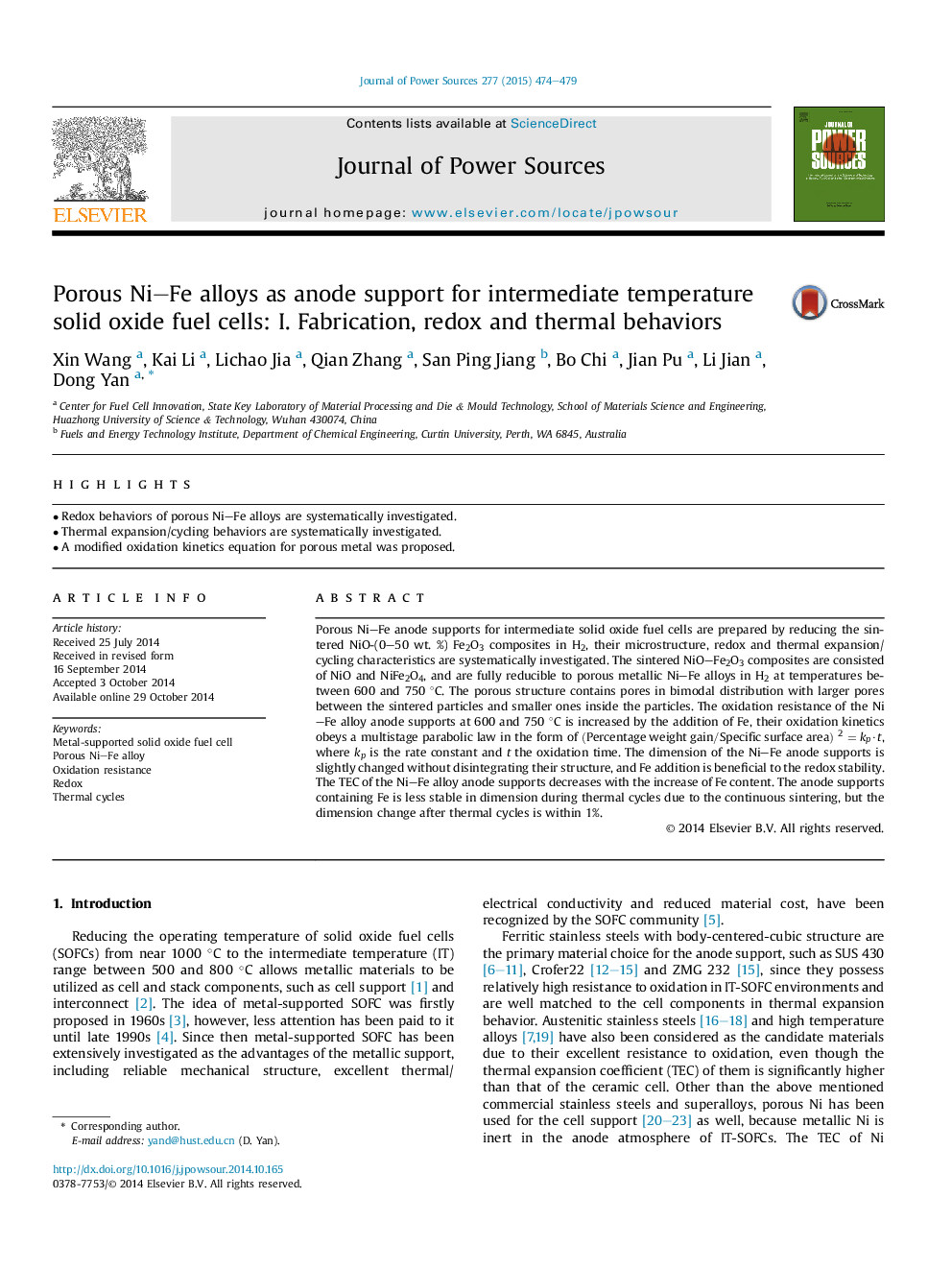| Article ID | Journal | Published Year | Pages | File Type |
|---|---|---|---|---|
| 1286805 | Journal of Power Sources | 2015 | 6 Pages |
•Redox behaviors of porous Ni–Fe alloys are systematically investigated.•Thermal expansion/cycling behaviors are systematically investigated.•A modified oxidation kinetics equation for porous metal was proposed.
Porous Ni–Fe anode supports for intermediate solid oxide fuel cells are prepared by reducing the sintered NiO-(0–50 wt. %) Fe2O3 composites in H2, their microstructure, redox and thermal expansion/cycling characteristics are systematically investigated. The sintered NiO–Fe2O3 composites are consisted of NiO and NiFe2O4, and are fully reducible to porous metallic Ni–Fe alloys in H2 at temperatures between 600 and 750 °C. The porous structure contains pores in bimodal distribution with larger pores between the sintered particles and smaller ones inside the particles. The oxidation resistance of the Ni–Fe alloy anode supports at 600 and 750 °C is increased by the addition of Fe, their oxidation kinetics obeys a multistage parabolic law in the form of (Percentageweightgain/Specificsurfacearea) 2=kp·t, where kp is the rate constant and t the oxidation time. The dimension of the Ni–Fe anode supports is slightly changed without disintegrating their structure, and Fe addition is beneficial to the redox stability. The TEC of the Ni–Fe alloy anode supports decreases with the increase of Fe content. The anode supports containing Fe is less stable in dimension during thermal cycles due to the continuous sintering, but the dimension change after thermal cycles is within 1%.
